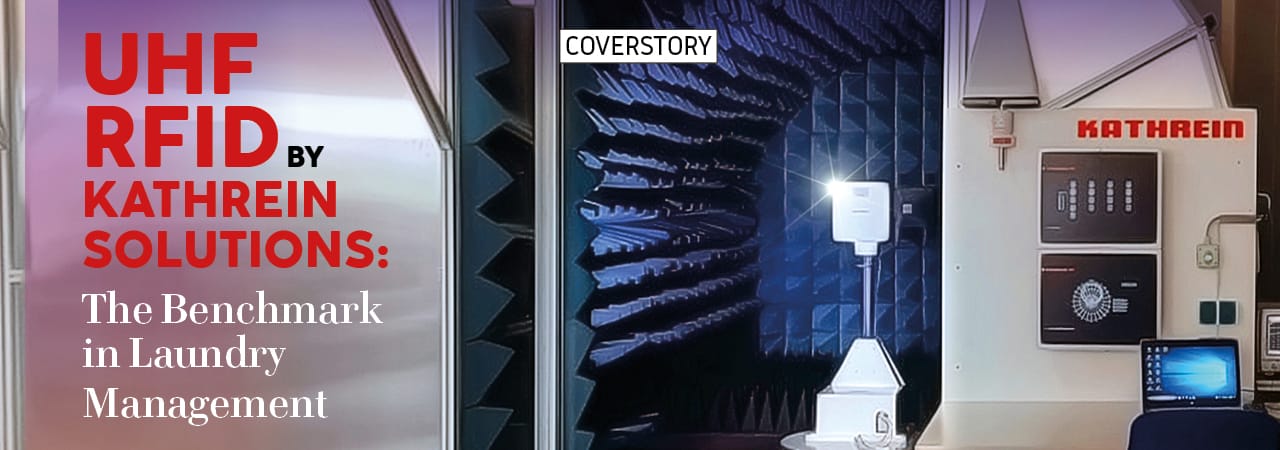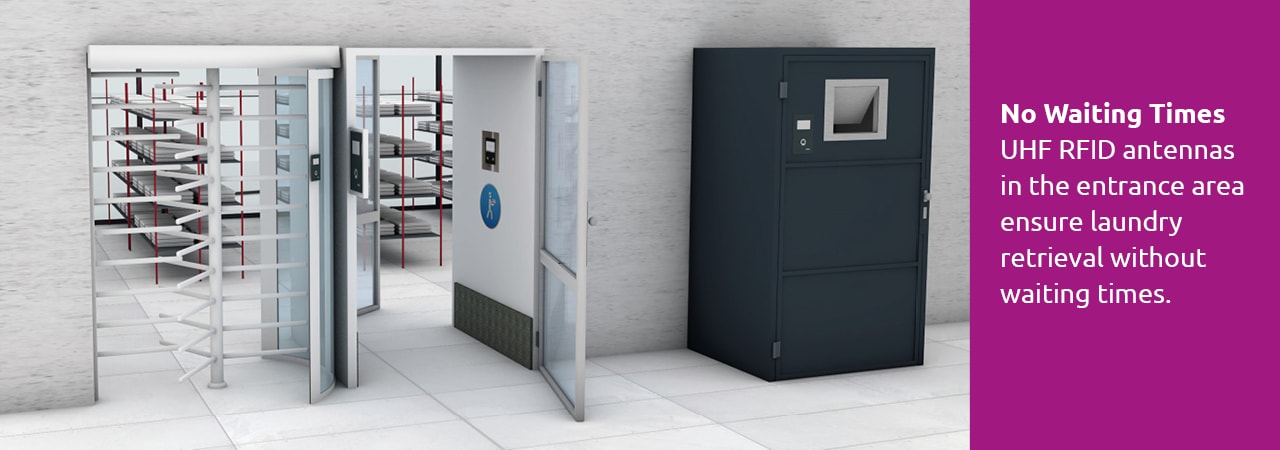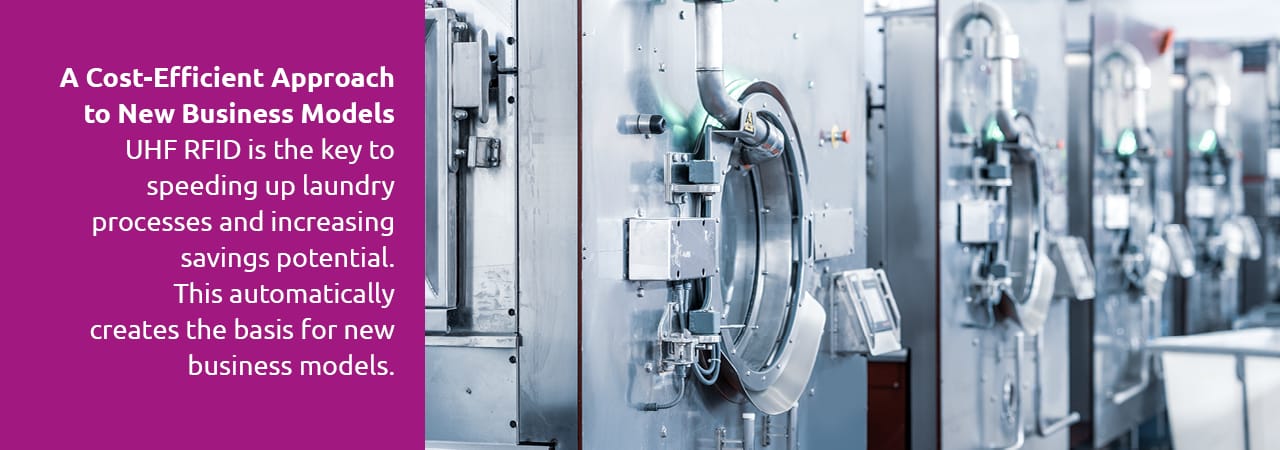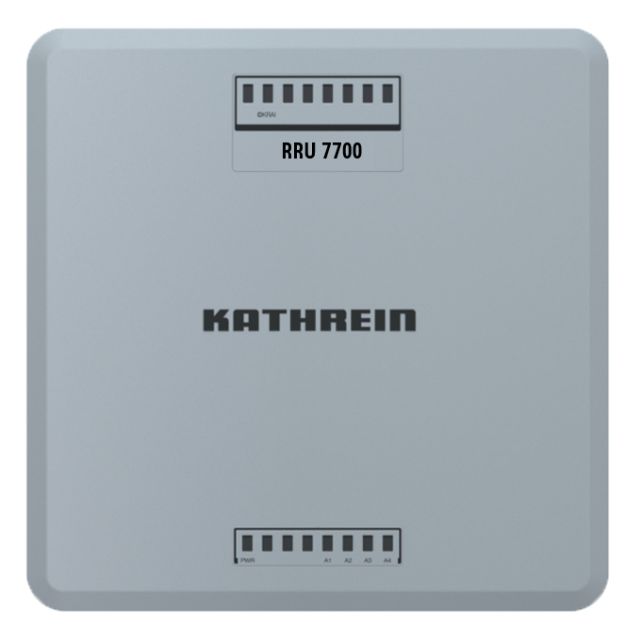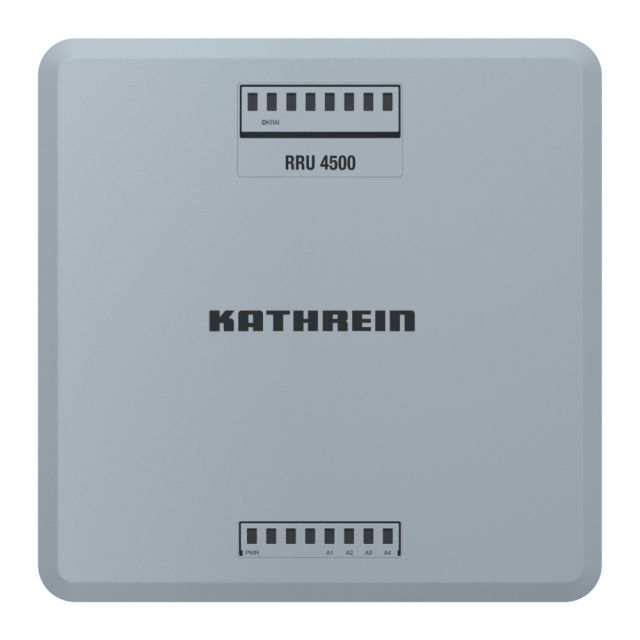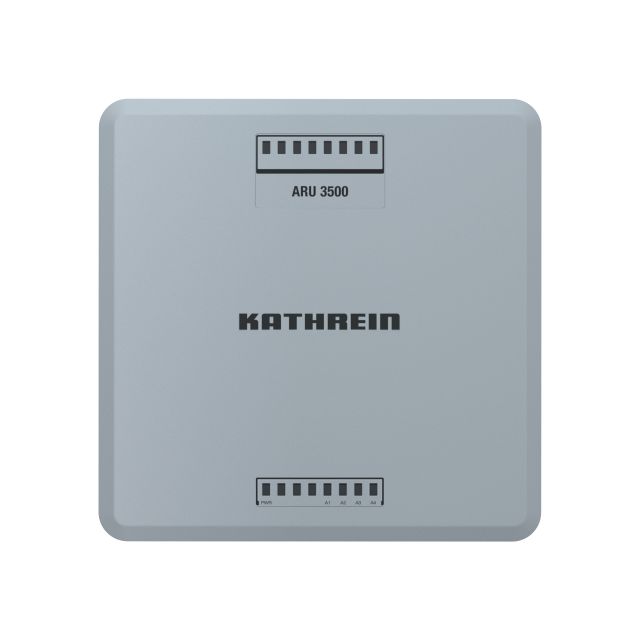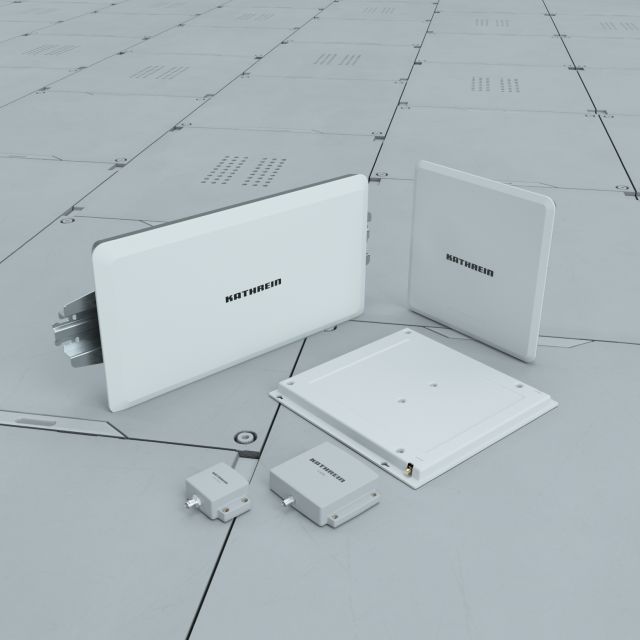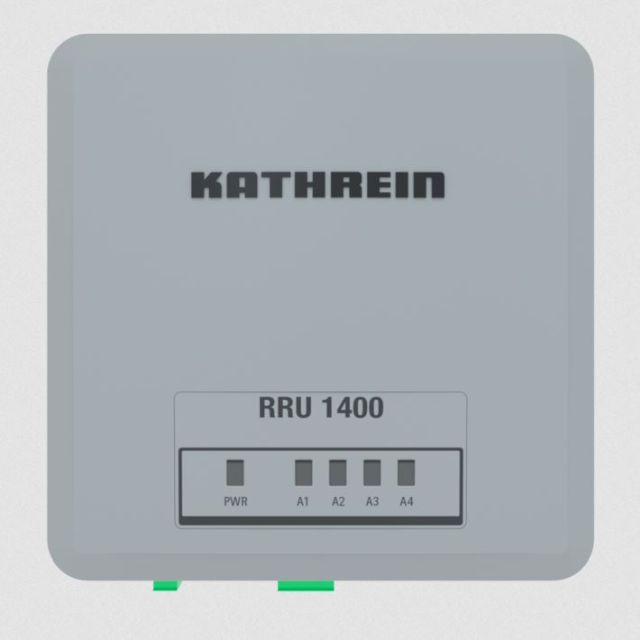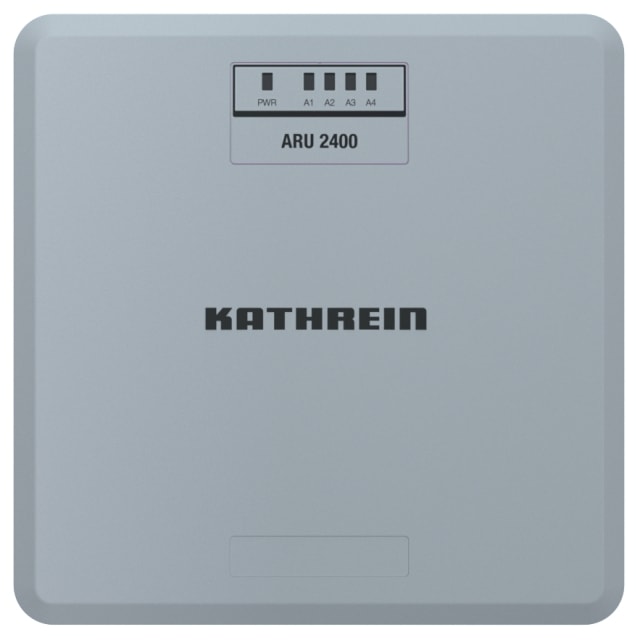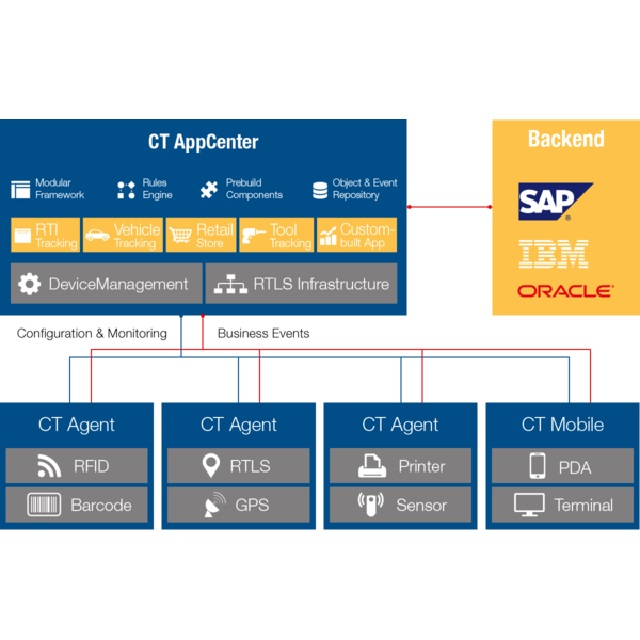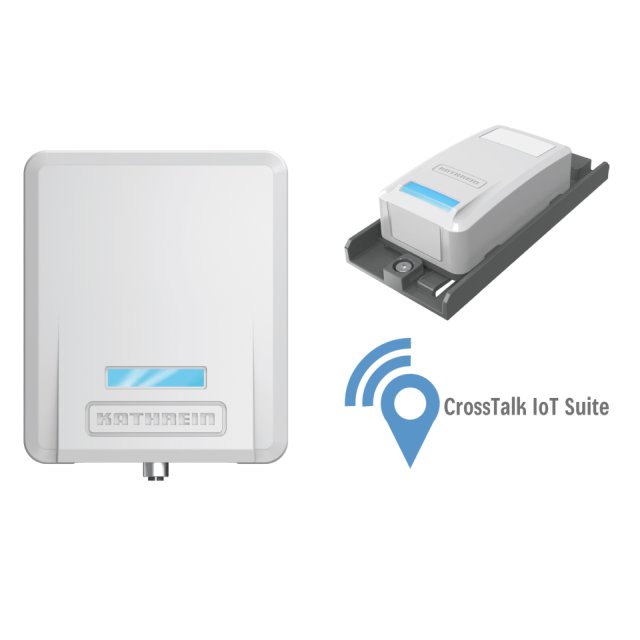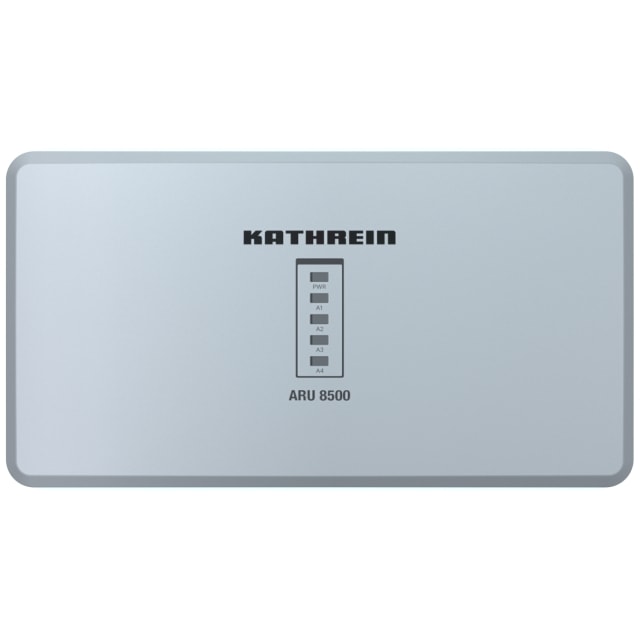100 % transparent processes for clear cost structures, hygienic laundry provision and maximum employee satisfaction
High-End Measuring Chamber for Precise Antenna Tests
In autumn 2019, Kathrein Solutions installed a high-end measuring chamber at the Stephanskirchen site. Antenna systems are measured in the frequency range from 600 MHz to 8.5 GHz. The chamber measures all IoT radio standards such as RFID, LoRa, Wi-Fi and UWB RTLS, starting in the lower band of 400 MHz up to the ultra-wide band of 6 GHz.
In-House Measuring Capacity Underlines Technological Innovation
With the measuring chamber, comprehensive analyses necessary for development can be realized in the shortest time possible. Antennas with Kathrein KRAI functionality can be measured and evaluated automatically. Additionally, 3D measurements of UHF RFID transponders on load carriers, fenders and windshields are possible.
Interview with Onur Yildiz, Senior Sales Manager, Kathrein Solutions.
RFID Hardware - Textile Logistics
Suitable for Harsh Environments
The ARU 3000 reader family includes RAIN RFID readers with an integrated 65-degree wide-range antenna. The devices feature a powerful UHF RF modulator and – depending on the model variant – optional interfaces such as PoE+, WiFi or 3G and a powerful and adaptable Linux-based computer unit.
UHF RFID Reader RRU 4500
The readers of the RRU 4000 Series feature a 33 dBm UHF-HF unit. Together with external antennas and connectivity via WiFi, PoE+, BLE or 3G, they provide a secure connection to back-end applications or IoT devices. The RRU 4500 models are equipped with a dual-core embedded computing unit for more complex data (pre) processing tasks.
Smart Shelf Antenna
The SMSH antennas are manufactured cost-efficiently on the basis of printed circuit boards. The flat design with a height of 8.6 millimeters without housing allows easy integration into shelves and cupboard compartments. The patented KRAI technology allows the connection of up to 32 SMSH antennas to one reader. The antenna generates sharply defined boundaries of a read/non-read zone.
WRA 7070 - KRAI RFID Antenna
With a range of up to 12 meters, the wide-range antenna covers numerous requirement scenarios. With a high protection class (IP67), the extensive temperature range and the possibility to attach the antenna to mobile devices, the WRA 7070 is suitable for countless applications in industry and logistics.
Textile Logistics with RFID
Textiles in Hospitals
The solution is very simple: All the staff clothing required in an area, ward or department is stored in a cabinet. Employees sign in using an RFID ID and then open a specific compartment containing their specific clothing. This eliminates travel time to central textile distribution points. Clothing is provided directly where it is needed. Decentralized textile transfer solutions are particularly suitable for hospitals and nursing homes that are organized on a single site, spread over several buildings. The networking of all cabinet systems via WLAN or Ethernet enables an insight into stocks almost in real time.
Workwear
Horticultural businesses, car repair shops, construction companies or technical field services – all of these companies provide their employees with protective equipment such as helmets or gloves (PPE). Once all items of clothing and PPE have been tagged with an RFID transponder, the 'classic' laundry management system is extended to the issue and administration of PPE.
Advantages such as availability and cost reduction can be implemented in a single system. The handling and allocation of individualized employee clothing in the laundry becomes transparent through the use of RFID. Mix-ups are eliminated.
Resident Laundry
In contrast to cabinet-based solutions, room solutions are the best choice when the organization and infrastructure is aimed at centralized laundry dispensing – for example, clinics where all wards, departments and functional areas are located in one building. As with a cabinet, employees sign in at the room entrance using an RFID medium, gain access and remove the desired items of clothing from the room.
When leaving the room, these are automatically captured and offset against the employee's 'clothing account'. In contrast to an automatic dispenser, the maintenance requirements of room solutions are extremely low, as only a small proportion of all components are mechanical. Even the use itself does not generate high costs for employees.
Hotel Laundry
Based on RFID technology, an efficient textile management system for hotels has become a reality. Starting with purchasing, through storage, cleaning and logistics, the entire cycle of hotel laundry is optimized. Shrinkage of towels, bathrobes or tablecloths is counteracted digitally. The inventory management system simplifies planning and invoicing with textile service providers. Inventory reductions generate lower costs and reduce the space required for storage. Depending on the size of the house, quantity reductions when using RFID-controlled applications can amount to several thousand units, since no 'laundry backup' is required.
Textiles for Industrial Cleaning
Service providers offer the rental of cleaning equipment for two target groups: Small and medium-sized companies that organize their cleaning independently, and as a complete service for professional contract cleaners. The services are based on RFID-tagged wiping cloths and mops. The transponders support transparent processes at the service provider. Advantages for the user are the elimination of acquisition costs, maintenance or wear-andtear of washing technology. The cleaning staff is relieved of workload, as there is no longer any need for counting and transport.
Dirt Trap Mats
Dirt trap mats effectively help to protect building floors – provided that they are cleaned regularly. Service providers offer complete services for logistics, cleaning and laying of dirt-trapping mats. Depending on customer requirements and weather conditions, mats are replaced every 7, 14 or 28 days. Depending on the size of the company, there are up to several hundred mats in a building.
For all mat management processes an exact counting of the mats is crucial. The number of cleaning processes must also be transparent. Depending on the load, floor mats are used up to 300 times before they need to be replaced. With exact data from the life cycle of each individual mat, mat service providers can optimize their offers.
A Room-Based Solution
Why is the Distribution of Workwear not Trivial?
Hospitals or nursing homes are dependent on shift operation. They have to provide cleaned workwear for employees around the clock, seven days a week. In many facilities, the distribution of clothing is centrally located in one place and is often managed manually. Overall, the provision of clothing is a high cost factor and causes waiting times at the dispensary during peak periods.
To avoid bottlenecks, continuous inventory control of quantities and model variants must be ensured. Manual stocktaking and reordering also generate time expenditure. A centrally located room where the garments are in stock and can be picked up can be a solution. But how does the controlled dispensing and automatic documentation of the withdrawal work?
Is the Laundry Room a Solution?
The use of clothing rooms is very easy for employees: With an RFID medium – for example an ID in the form of an RFID chip card or an RFID keyfob – users authenticate themselves at the entrance, then enter the laundry room, remove the desired textiles from the shelves and leave the room through a revolving door or double-door sluice. The removed laundry items are captured fully automatically via UHF RFID readers integrated in the entrance and exit areas.
The basis for implementing a room solution is – as in any automated laundry dispensing system – the identification of all textiles with a UHF RFID label. The ID number on this label is the interface for the entire laundry cycle. Advantage and time saving: The manual registration of the textiles – both in the delivery room and when the laundry is delivered – is no longer necessary. The use of UHF RFID technology guarantees a permanent inventory. Based on inventory data, problems such as shrinkage or bottlenecks are detected early on. An RFID-based room solution enables efficient round-the-clock operation without clothing shortages.
Access via Sluice or Revolving Door
A room solution offers the advantage of free configuration. The required installations – entrances and exits, reader hardware – can be adapted to almost all infrastructural conditions and specifications. In a standard configuration for textile identification, ARU3400 UHF RFID readers with an integrated 65-degree wide-range antenna from Kathrein Solutions are used.
The readers are supplemented by wide-range 70-degree antennas in the fresh laundry entrance area. The wide illumination range of the antenna ensures optimum detection rates. Laundry containers and shelves are detected 100 %. Access to the dispensing area can be implemented with various systems – as a sluice with sliding doors or with a revolving door. With both variants, the collection of removed clothing items takes place when the items leave the room.
Target Group: Hospitals and Large-Scale Enterprises
A room solution for clothing distribution enables employees to access the required work clothing within seconds. Use and operation are largely intuitive. Hospitals and large enterprises with a central infrastructure benefit from the reliable and transparent capture of laundry quantities. The use of textiles is efficiently controlled and monitored. Access to the dispensing room can be solved via an authorization system, so that even temporary employees have access to the room. The central laundry warehouse becomes an intelligent clothing depot, because the inventory of the textile stock in real time is possible at any time.
Cabinet Solution
Cabinet Solutions are Decentralized
Laundry compartments with integrated UHF RFID technology provide employees with self-sufficient, round-the-clock cleaned workwear in a decentralized manner. Distribution and return is transparent for employees, operators and textile service providers. In comparison to a room solution, dispensing cabinets are used everywhere in decentralized infrastructures where travel times to central distribution points should be eliminated.
How Does the Cabinet Solution Work?
A cabinet solution basically consists of two components: A cabinet with cleaned laundry and an opening for dropping worn clothes. With both components, the integrated UHF RFID technology ensures the exact identification of each tagged item of laundry. As with the room solution, the cabinet solution is also intuitive to use. Employees identify themselves via an RFID medium. A comparison with the employees' data stored in the system leads to the opening of a specific compartment from which the appropriate clothing is taken. The return and booking of worn clothing is carried out via a dispenser. During the insertion process, the integrated technology records the laundry ID.
Control over Clothing Account
Cabinet solutions are suitable for providing maximum transparency and efficiency in the employee clothing cycle. Each employee is assigned a clothing account according to his or her body measurements and tasks. In this account, a certain maximum number of trousers and tops that may be removed from the wardrobe is stored. If the account is empty, any laundry worn must first be discarded to replenish the clothing account. The advantage of this solution: the 'bunkering' of laundry is excluded.
For the company, this documentation means that quantities of laundry are purchased or borrowed exactly as needed. Excess stocks to secure bottlenecks are superfluous with a cabinet solution. Kathrein SmartShelf Antennas are integrated into each compartment and networked with an RRU4500 RFID reader.
All textiles are identified at the supply points during loading, removal, return and disposal. Article and carrier information is thus linked for the continuous management of the textile inventory. Conclusion: The textile goods flow is transparent. Service providers receive separate access rights to fill the dispenser with fresh textiles. Furthermore, individual evaluations can be created to control the laundry management.
Target Group: Hospitals with a Decentralized Infrastructure
Every company that has a decentralized building structure distributed over a larger site uses cabinet solutions to create decentralized laundry supply points. Travel times before the start of a shift are eliminated. However, cabinet solutions are also particularly suitable for smaller businesses and facilities where more than just clothing is to be dispensed. For example, cabinet solutions are also suitable for the safe storage and transfer of personal protective equipment such as helmets, gloves or face visors.
The Laundry Solution
What Advantages Does RFID Technology Generate in the Laundry?
The UHF RFID transponders used to label textiles are resilient and can withstand sterilization processes without damage. They survive more than 150 washing, drying and ironing cycles. The main advantage of RFID implementation in laundries is the transparency of tagged textiles in real time within the laundry cycle. It is possible to locate exactly which and how many items of laundry are in stock at the customer's premises and which are in the laundry. With just one click, IT can display all inventory data.
Without manual counting or sorting, this inventory is automated and error-free. The condition for bulk reading: Each piece of laundry must be tagged and the laundry must be equipped with RFID readers. Advantage: A delivery note can be generated automatically and the correct invoicing takes place directly upon delivery. Also automatically: If a UHF RFID reader gate is also installed at the customer's laundry entrance, the delivery note is checked automatically.
Which Specific Processes Run More Efficiently with RFID Technology?
In laundries, RFID technology supports two process steps: Incoming and outgoing goods. These logistics interfaces involve counting, sorting and commissioning operations. UHF RFID reading points, at the mangle or the terry weaving machine for example, can additionally optimize the logistical processes by evaluating data on the status of further processing. UHF RFID detection therefore also supports the flow of processing operations as a whole. The acquisition of machine operating data with a finer granularity is a side effect. In this way, predictive maintenance is automated.
What Strategic Advantages Arise Internally for Laundries and their Customers?
Laundries achieve the most sustainable added value in the areas of cost reduction, efficient machine utilization, increased quality and reliable delivery. RFID technology also enables long-term data acquisition for the analysis of error-prone processes. Billing becomes more transparent for the customer. The use of RFID will create new business models for textile service providers in the 'laundry rental' sector. The transparency of delivery quantities and the control of returned goods builds trust and improves communication with the customer.
Source: RFID & Wireless IoT Global, Special Edition Laundry 2020


